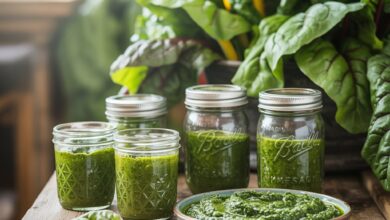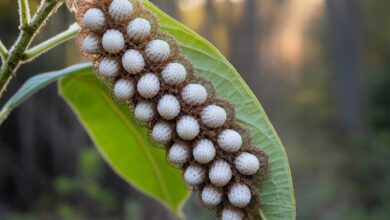Purslane: The Superfood That Tastes Better Than Meat – 7 Reasons to Grow It in Your Garden

Purslane (Portulaca oleracea) might look like just another common garden weed, but don’t be fooled—this humble plant is a nutritional powerhouse bursting with health benefits and culinary potential. With its crisp texture and subtly tangy, salty flavor, purslane rivals many superfoods and even some meats in terms of nutrition. If you haven’t yet added this versatile green to your garden or kitchen, here are seven compelling reasons to start today.

1. A Plant-Based Omega-3 Champion
Purslane stands out as one of the richest plant sources of omega-3 fatty acids, boasting levels that can surpass those found in some fish and meats. These essential fats are known to reduce inflammation, support heart health, and boost brain function. For vegetarians and vegans, purslane offers a valuable way to increase omega-3 intake naturally.
2. Loaded with Vital Vitamins and Minerals
This green packs a serious nutrient punch. It’s rich in vitamins A, C, and E, along with important minerals like magnesium, calcium, potassium, and iron. Vitamin A promotes healthy eyesight and strengthens the immune system, while vitamin C protects against oxidative stress. Magnesium and potassium help regulate blood pressure and support muscle function. Compared to many common vegetables, purslane delivers more essential nutrients per serving.
3. Heart-Healthy Benefits
Thanks to its high omega-3 content, purslane helps lower bad LDL cholesterol and raise good HDL cholesterol. Its potassium helps maintain healthy blood pressure, reducing cardiovascular risk. Plus, the antioxidants in purslane combat oxidative damage linked to heart disease. Adding purslane to salads, smoothies, or soups is an easy way to naturally support your heart health.
4. Supports Weight Loss and Digestion
Low in calories but high in fiber, purslane promotes a feeling of fullness, helping curb cravings and support weight management. Its mucilaginous (gel-like) texture also nurtures a healthy gut by encouraging beneficial bacteria. Toss it into smoothies, stir-fries, or light summer dishes for a nutritious, low-calorie boost.
5. A Powerful Antioxidant Source
Purslane contains antioxidants like beta-carotene, glutathione, melatonin, and betalains—compounds prized for their anti-inflammatory and disease-preventing effects. These antioxidants help protect against premature aging, chronic inflammation, and other health issues. To preserve these benefits, enjoy purslane fresh in salads.
6. Easy to Grow and Drought-Resistant
One of purslane’s best qualities is how simple it is to cultivate. It thrives in poor soil, needs minimal water, and grows rapidly—making it an excellent sustainable choice for home gardens. Whether grown from seeds or cuttings, purslane flourishes in containers, raised beds, or garden borders, offering a steady supply of fresh greens.
7. Delicious and Versatile in the Kitchen
Purslane’s crunchy texture and mild lemony-salty taste make it a refreshing addition to many dishes. Use it raw in salads, sandwiches, or wraps. Cook it lightly in stir-fries, soups, and omelets, or ferment it into a probiotic-rich side. A simple recipe to try: sauté purslane with garlic, olive oil, and a squeeze of lemon for a flavorful, nutrient-packed side dish.

Far from just a weed, purslane is a superfood that brings nutrition, flavor, and health benefits to your plate and garden. Whether you want to support your heart, boost digestion, or add more plant-based nutrients to your diet, purslane is an underrated green worth growing and enjoying.




